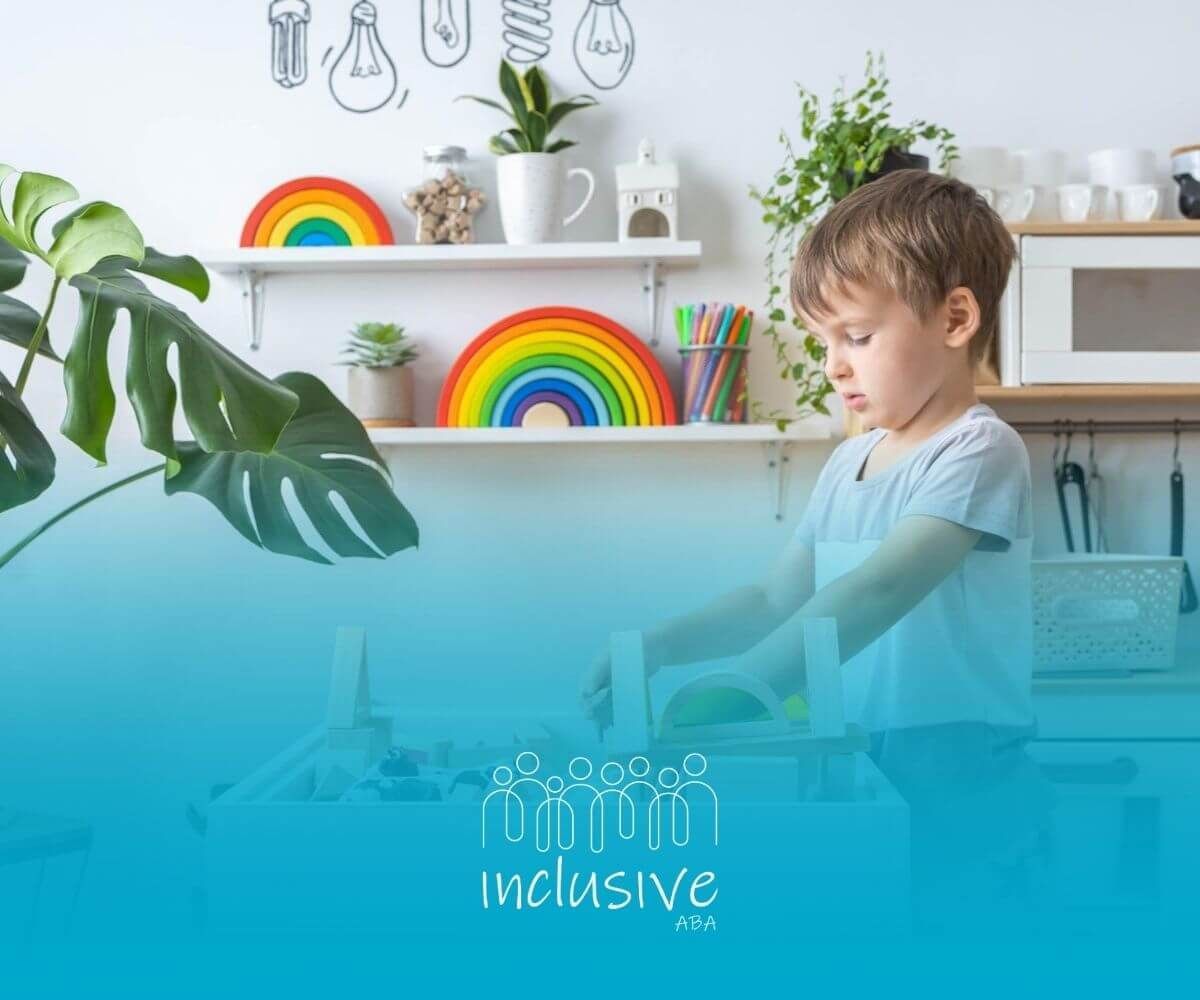ABA vs Occupational Therapy for Autism: Understanding the Difference and Making the Right Choice
Understanding the differences between ABA therapy and occupational therapy (OT) is crucial for families seeking the best support for their children, especially those with autism spectrum disorder (ASD). Both therapies offer unique benefits and approaches, but knowing which is right for your child-and when to use each-can make a world of difference in progress and daily life.
This article will explore the core principles, similarities, and differences between ABA vs occupational therapy, clarify when each therapy is most effective, and show how Inclusive ABA supports families in Nevada, Nebraska, and Colorado with tailored, compassionate care.
What is ABA Therapy?
Applied Behavior Analysis (ABA) therapy is a science-backed approach that focuses on understanding and changing behaviors. It is especially well-known for its effectiveness in supporting individuals with autism spectrum disorder (ASD) and related developmental challenges.
Core Principles of ABA:
- Behavioral Focus: ABA targets observable behaviors, aiming to increase positive behaviors (like communication and social skills) and decrease challenging ones (like aggression or self-injury).
- Data-Driven: Therapists use data to track progress and adjust interventions as needed.
- Individualized Plans: Each child receives a tailored plan based on their unique strengths and needs.
- Family Involvement: Parents and caregivers are integral to the therapy process, learning strategies to support their child at home and in the community.
- Evidence-Based: ABA is recognized as a
best-practice treatment for autism by the US Surgeon General and the American Psychological Association.
- Shaping: Reinforcing small steps toward a larger goal.
- Chaining: Breaking down complex tasks into manageable steps.
- Positive Reinforcement: Rewarding desired behaviors to encourage repetition.
- Functional Behavior Assessment: Identifying the reasons behind behaviors to develop effective interventions.
Settings for ABA:
- Home, school, clinic, or community environments.
- Sessions can be intensive, sometimes up to 40 hours per week, depending on individual needs.
What is Occupational Therapy?
Occupational Therapy (OT) is a holistic, client-centered health profession that helps people of all ages participate in daily activities (or “occupations”) that are meaningful to them. For children, play is their main occupation, so OT often focuses on developing play skills, self-care, and school readiness.
Core Principles of OT:
- Functional Focus: OT aims to improve a child’s ability to perform everyday tasks, such as dressing, eating, writing, and playing.
- Holistic Approach: Therapists look at the whole child, physical, sensory, emotional, and cognitive needs.
- Environmental Adaptation: OT may involve modifying the environment or using adaptive equipment to support participation.
- Family and Child-Centered: Goals are developed with input from the child and family, ensuring therapy is meaningful and relevant.
OT Techniques:
- Sensory Integration: Helping children process and respond to sensory information.
- Fine and Gross Motor Skills Development: Improving hand-eye coordination, balance, and strength.
- Activities of Daily Living (ADL) Training: Teaching skills like dressing, feeding, and hygiene.
- Play-Based Learning: Using play as a vehicle for skill development.
Settings for OT:
- Schools, hospitals, clinics, homes, and community settings.
- Flexible to meet the child’s needs in their natural environment.
ABA vs OT for Autism: Key Differences
Understanding the
difference between occupational therapy and behavioral therapy is essential for families navigating autism support.
| Aspect | ABA Therapy | Occupational Therapy (OT) |
|---|---|---|
| Primary Focus | Changing observable behaviors; skill acquisition; behavior reduction | Improving functional abilities; daily living and play skills |
| Approach | Structured, data-driven, uses reinforcement and behavior analysis | Holistic, uses play, sensory integration, and adaptations |
| Techniques | Shaping, chaining, positive reinforcement, FBA | Sensory integration, motor skills, ADL training, environmental adaptation |
| Target Population | Primarily children with ASD or behavioral challenges | Children and adults with a range of diagnoses, including ASD |
| Settings | Home, clinic, school, community; often intensive | Home, school, clinic, hospital, community; flexible |
| Professional Background | Psychology, behavior analysis | Medical, rehabilitation, occupational science |
Key Takeaways:
- ABA therapy addresses challenging behaviors, teaches new skills, and supports children who need structured, intensive intervention.
- OT is ideal for improving daily living skills, sensory processing, and functional independence, especially when physical or sensory challenges are present.
- Both therapies can be used together for a comprehensive approach.
Similarities Between ABA and OT
Although ABA vs occupational therapy are distinct, they share some important similarities:
- Both break down complex tasks into smaller, manageable steps to help children achieve their goals.
- Both are evidence-based and involve data collection and progress monitoring.
- Both involve parents and caregivers in the therapy process.
- Both can
support children with autism and related developmental challenges.
How Do ABA and OT Work Together?
ABA and OT are not mutually exclusive. In fact, many children with autism benefit from both therapies working in tandem:
- Collaborative Goal Setting: ABA and OT therapists can coordinate to set complementary goals, such as improving communication (ABA) while addressing sensory sensitivities (OT).
- Integrated Strategies: For example, an OT might help a child tolerate new textures during feeding, while an ABA therapist reinforces the child for trying new foods.
- Holistic Support: Combining behavioral and functional approaches ensures the child’s needs are met across all areas of development.
ABA vs OT: When to Choose Each
When to Consider ABA Therapy:
- Your child exhibits challenging behaviors (tantrums, aggression, self-injury).
- Your child needs to learn new skills (communication, social interaction, self-care).
- You’re seeking a structured, intensive program with measurable outcomes.
- Your child has a diagnosis of autism and requires support with behavior management.
When to Consider Occupational Therapy:
- Your child struggles with daily living skills (dressing, feeding, hygiene).
- Your child has sensory processing challenges (over- or under-reacting to sounds, textures, lights).
- Your child needs help with fine or gross motor skills (writing, balance, coordination).
- You want a holistic approach that addresses the whole child, including emotional regulation.
When to Use Both:
- Your child has both behavioral and functional challenges.
- You want a comprehensive, team-based approach to support your child’s growth.
Which Therapy Is Best for Your Child?
ABA or Occupational Therapy?
ABA vs OT for Autism: Real-World Examples
Example 1: Challenging Behaviors at School
- ABA Approach: A therapist observes a child’s tantrums during transitions, identifies triggers, and teaches coping strategies using reinforcement.
- OT Approach: An OT assesses whether sensory sensitivities (like loud noises) contribute to the behavior and introduces sensory breaks or tools.
Example 2: Difficulty with Dressing
- ABA Approach: The therapist breaks down the dressing process into steps, teaching and reinforcing each step.
- OT Approach: The OT works on fine motor skills, adapts clothing (like using Velcro), and practices dressing in a playful context.
Example 3: Feeding Challenges
- ABA Approach: Uses reinforcement to encourage trying new foods.
- OT Approach: Addresses oral-motor skills and sensory sensitivities to textures or tastes.
How Inclusive ABA Can Help
At Inclusive ABA, we believe every child deserves a personalized approach that addresses their unique strengths and challenges. Here’s what sets us apart:
All-Inclusive ABA Therapy
- We offer comprehensive ABA services for kids in Nevada, Nebraska, and Colorado, guiding families from assessment to progress celebration.
- Our expert ABA providers use evidence-based strategies to help your child master new skills and overcome behavioral challenges.
In-Home and School-Based Services
- Therapy happens where it matters most: at home or in the classroom. This real-world approach ensures skills are learned and used in everyday life.
Bilingual BCBAs
- We break language barriers, offering services in multiple languages so every family feels at home and understood.
Parent Training and Family Support
- You’re never alone. We provide expert guidance and resources so you can support your child’s growth beyond therapy sessions.
Insurance Management
- We handle the paperwork, enrollment, and approvals you can focus on your child.
Initial ABA Assessment
- We dig deep to identify your child’s strengths and struggles, setting the stage for meaningful progress.
Collaboration with Other Professionals
- We work closely with occupational therapists, speech therapists, and schools to ensure your child receives well-rounded, coordinated care.
At Inclusive ABA, we teach skills, empower families, celebrate every victory, and help children thrive in the environments that matter most.
Conclusion
Choosing between ABA vs occupational therapy is not about picking a winner- it’s about finding the right tools for your child’s journey. Whether your child needs help with behavior, daily living, or both, the right support can open doors to independence and joy.
Ready to see how Inclusive ABA can make a difference? Let’s build your child’s success story together. Reach out today for a personalized consultation. Every child’s journey deserves a team that cheers them on at every step.
Frequently Asked Questions (FAQs)
Is ABA better than occupational therapy?
ABA and OT serve different purposes. ABA is best for addressing behavioral challenges and skill acquisition, particularly for children with autism. OT focuses on daily living skills, sensory processing, and functional independence. The best approach depends on your child’s unique needs, and many children benefit from both therapies working together.
Does occupational therapy work for autism?
Yes, occupational therapy is effective for children with autism, especially for improving daily living skills, sensory processing, and fine and gross motor abilities. OT can help children participate more fully in home, school, and community life.
What is better than ABA therapy?
No single therapy is “better” for every child. ABA is highly effective for behavior and skill-building, but combining it with OT, speech therapy, or other interventions can provide a more comprehensive approach, depending on the child’s needs.
Does OT help with behavioral issues?
OT can help address behavioral issues that are related to sensory processing or functional challenges. However, for persistent or severe behavioral challenges, ABA therapy is typically more effective. OT and ABA often work best when combined for holistic support.
Sources:
- https://neurolaunch.com/occupational-therapy-vs-behavioral-therapy/
- https://www.carlow.edu/how-occupational-therapy-helps-autistic-patients/
- https://www.kidscarehospital.com/ot-or-aba-which-is-better-therapy-for-my-child/
- https://www.autismspeaks.org/occupational-therapy
- https://www.chatterbox.com.au/health-and-well-being/whats-the-difference-between-behavioural-therapy-and-occupational-therapy/
- https://idcchealth.org/blogs/does-occupational-therapy-help-with-behavior-problems/
Looking for Expert Help? We're Here for You!
Our compassionate and skilled team is devoted to enhancing your child's development through customized ABA therapy. Let us partner with you to create a supportive environment for your child's success.
Discover how we can help your family thrive with expert ABA therapy.
Related Posts







